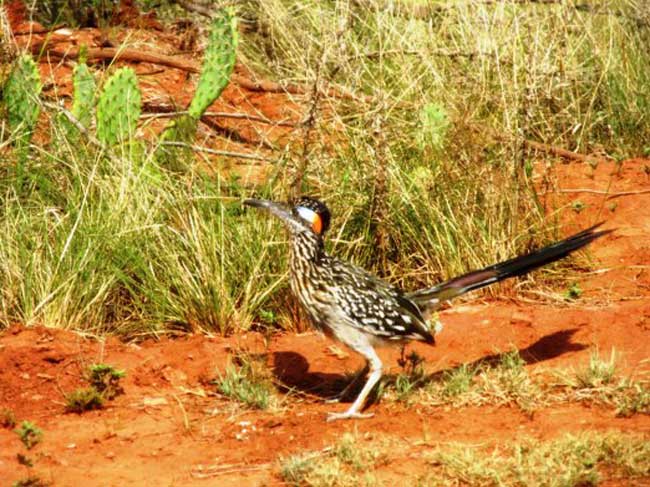Secret Lives of Roadrunners Revealed

The roadrunner might have eluded Wile E. Coyote in cartoons, but now scientists are finally capturing its secrets.
Radio tags on roadrunners are revealing the small birds can each have surprisingly large home ranges. Building on knowledge of roadrunners could shed light on the plight of endangered species in those areas, researchers added.
Although the roadrunner is fairly common across the southwestern United States, surprisingly little is known about the bird.
"As a predatory bird, they're pretty wary, and they appear somewhat intelligent in terms of being able to avoid a trap, so they're not easy to capture for study," explained researcher Dean Ransom, a wildlife ecologist at Texas AgriLife Research.
To study roadrunners, at first Ransom and his colleagues tried luring the birds toward nets with taped playbacks of roadrunner calls, but while the birds did come to look for encroaching rivals, "we couldn't get them in the nets," he recalled. "We hit upon using a trap for birds of prey, a leg noose baited with a live mouse."
After capturing the roadrunners, they attached radio transmitters onto them and let the birds go, studying their movements of some 50 roadrunners over the past four years. As their name suggests, roadrunners spend most of their time walking and running along the ground, but are capable of flight when pressured. "It's not graceful, but it works," Ransom said.
Roadrunners are monogamous and likely mate for life, with the male helping in all facets of nesting and feeding the young, including incubating the eggs at night, the researchers helped confirm. They lay about four eggs on average per nest, but the clutch size can range as high as 10. In the larger clutches, many of the young don't survive and older nestlings have been seen eating their younger siblings.
Sign up for the Live Science daily newsletter now
Get the world’s most fascinating discoveries delivered straight to your inbox.
"We used nest cameras to document what the parents were feeding their young," he added. "The diet is based solidly on reptiles, especially Texas horned lizards. We have also seen mice, snakes, grasshoppers and a tarantula."
Radio tags revealed the home ranges of roadrunners was much larger than before thought.
"These are just birds that are 350 grams or so (roughly three-quarters of a lb.), yet they're able to use an area of 100 hectares or 250 acres. That's quite a feat," Ransom said. "I wouldn't think twice about that for a wild turkey, a 13-lbs. big, long-legged heavy bird, but for a roadrunner that seems extreme and was really surprising to me."
Roadrunners occupy landscapes along with many other birds, "and while roadrunners so far are not in trouble, a lot of birds inhabiting the same areas seem to be," Ransom said. "So because they have such large spatial requirements, they might be able to serve as an indicator species of something going wrong in an environment, like a canary in a coal mine. Learning more about roadrunners could therefore shed light on the human footprint on areas."
For instance, the reason these roadrunners have such large ranges could be due to fragmentation of vegetated areas, which can make food or nesting sites more scarce. "I suspect that if the fragmentation of vegetation gets smaller, you'll see territory sizes drop dramatically," Ransom said.
A number of mysteries persist regarding these birds.
"At one camera of a nest, we saw an untagged bird sitting at the edge of a nest, and the only way a mated pair might let that happen — roadrunners are territorial birds — is if the third bird is related," Ransom said. "So there might be a helpers-at-the-nest behavior going on there. We'd like to know more about that."
- Birds of Prey: Spot Today's Dinosaurs
- Meep-Meep! 'Road Runner" Dino Discovered
- All About Birds










